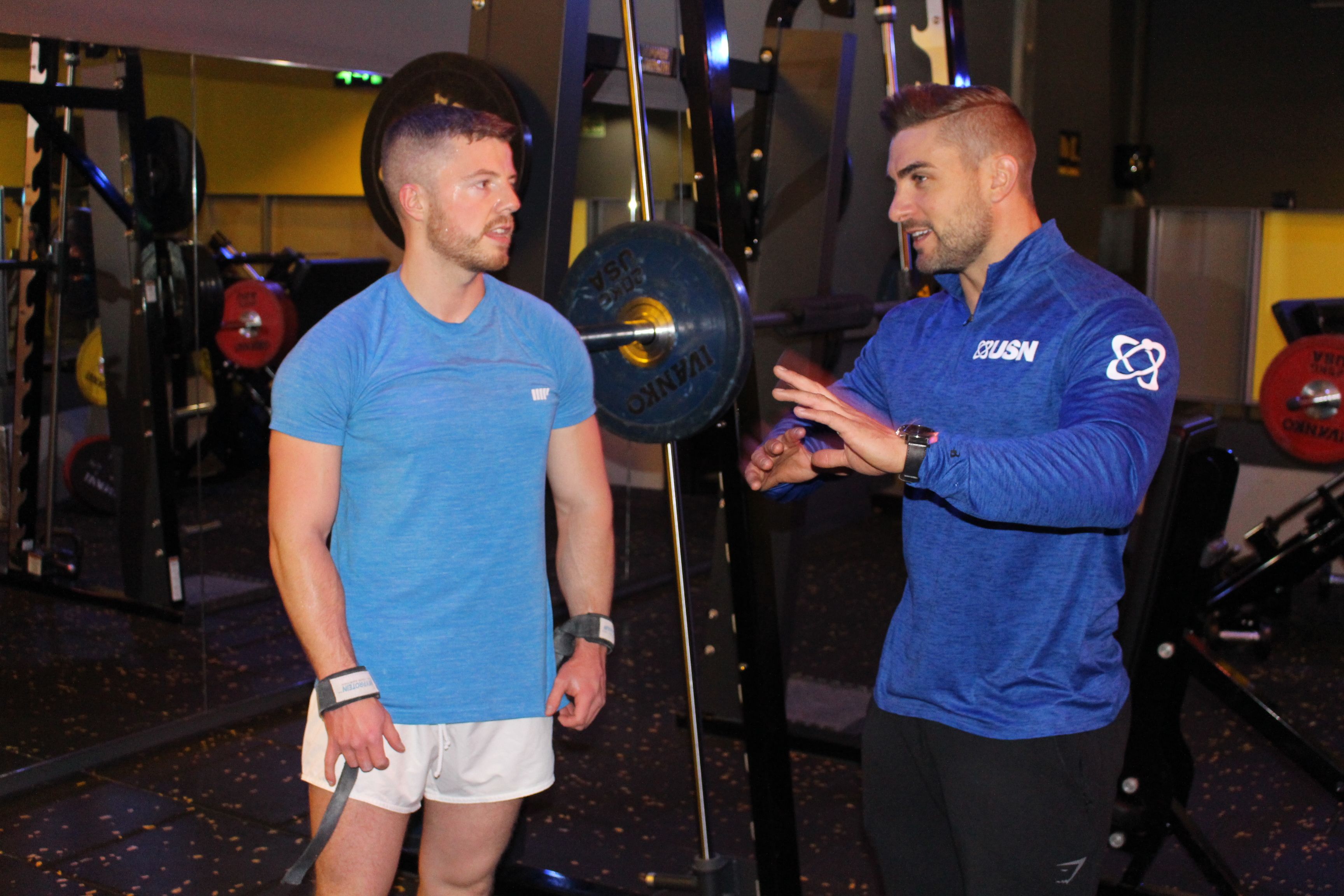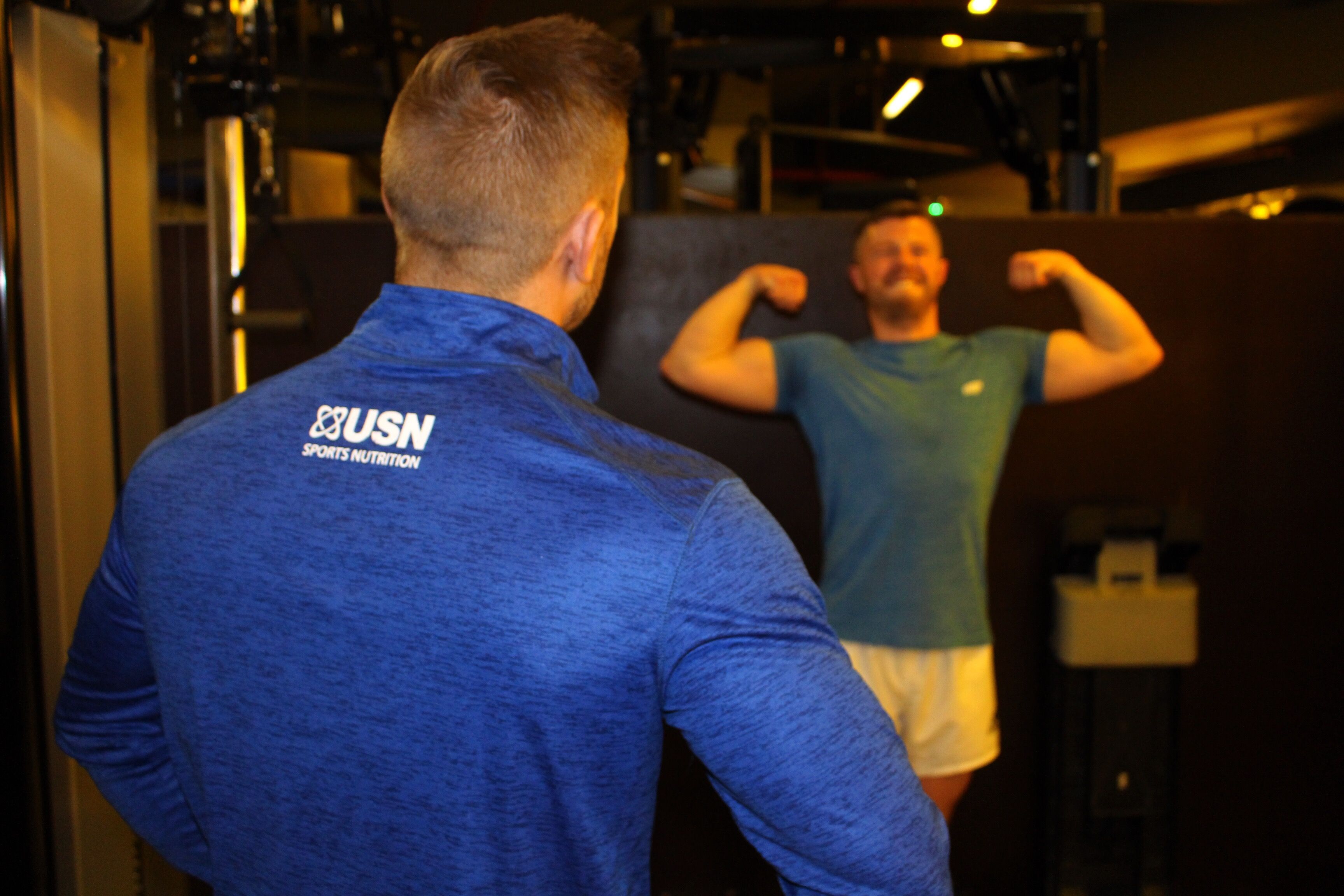JOE were invited down for a workout with bodybuilder Ryan Terry, the UK’s top fitness model
Terry placed in the top three at this year’s Mr. Olympia contest, making him one of the world’s best. In order to stand out on stage, the Nottinghamshire native employs a number of advanced bodybuilding techniques.
With a careful management of training, you too can include these in your routine for greater muscle gain. Also a USN Sports Nutrition ambassador, Ryan put me through a session at Gymbox Covent Garden.
Back, Biceps and Shoulder Workout
Our session comprised the following exercises:
- Wide-Grip Lat Pulldown
- Close-Grip Lat Pulldown
- Rear Delt Cable Flyes
- Crucifix Cable Curls
- Preacher Curls
Time Under Tension
Time Under Tension (TUT) stands for the time you spend performing each rep. “Extending TUT is a great way of pushing through plateaus”, Ryan says.
“Not a lot of people like doing it as there’s a lot of pain involved, and it’s not the normal tempo of a typical rep.”
Most normal reps follow a ‘two seconds up, two seconds down’ method, but to get advanced results from training, Ryan employs a slightly different tempo.
“It’s all about the eccentric (lowering) phase of the movement – so instead I’ll go with four seconds down and two seconds up.”
Ryan says, “Time Under Tension can prove a very effective method for preventing injury. You don’t have to load the bar up with tremendous weight”.
You may be lifting quite light, but you have to focus on maintaining tension and control through every single rep.
I’m quite proficient at pulling movements, with weighted pull-ups and gymnastic ring chin-ups a frequent feature of my training programme. These bodybuilding tweaks were really difficult, though.
Six Slow, Six Fast
If Time Under Tension alone wasn’t tough enough, Ryan employed two different tempo methods – in one set.
We performed lat pulldowns like this:
- 6 slow, controlled reps – 4 seconds down, 2 seconds up
- 6 further reps – with a much quicker tempo
By the 12th rep, we were sporting proper Popeye forearms. This has a specific effect on recruiting different kinds of muscle fibres.
Ryan said, “The first six reps recruit slow-twitch muscle fibres, and the quicker sets activate more fast-twitch muscle fibres”.
https://www.instagram.com/p/BpPK9mqH4cj/
Mix Your Grip
Most people will only perform one variation of pull-ups and/or lat pulldowns. Ryan made it clear that using a variety of grips is best for overall back development.
“Wider grip pulldowns are best for working on back width, whereas using the close-grip attachment adds more of a thickness to your back”, he said.
Ryan had us use a variety of grips to target different areas of the lats.
With wide-grip pulldowns, the upper lats take the brunt of the weight as the bar is pulled down to the upper chest. When we switched to close-grip pulldowns, he implemented a tip learned from Welsh bodybuilder Flex Lewis.
Lewis won a record 7th Mr. Olympia title earlier this year, and he’d previously advised Ryan to pull the weight to the lower part of the chest.
“Pulling the attachment to your lower chest works more of the lower lats”, Ryan said.
“Including both variations hits all areas of the lats to create that complete look”.
Read more: the best kinds of bread to eat for weight loss
Intra-Set Flexing
Flexing your muscles is seen as little more than vanity, but that couldn’t be further from the truth. It has a distinct purpose, specifically between sets. Flexing hasn’t got much to do with posing in front of the mirror just for the sake of it.
“It’s hard to do in between sets and it’s a static motion which puts a lot of people off”, Ryan says.
“But flexing allows you to be able to control your muscles. It’s easier to recruit them during an exercise because of this. But for a bodybuilder, it also helps you to control your muscles on-stage, too.”
I put this to the test between our final sets of bicep curls. It wasn’t pretty. Ryan had me squeeze the biceps for a full 15 seconds after each set of preacher curls.
As you can see, it helped draw blood and sarcoplasmic fluid into the muscle to provide that pump. But squeezing the muscle with this static contraction so soon after having put it through a working set hurt like hell. My face says it all – specifically the jib I was pulling.
The science stands firmly in favour of flexing, too. Research actually shows the mind-muscle connection to promote growth. Flexing your biceps in between sets has been shown to boost muscle growth by as much as 12.4%.
The next time someone calls you out for flexing and not resting between sets, you can remind them of this.
Ryan Terry is an ambassador for sports nutrition brand USN. To find out more visit www.usn.co.uk












































